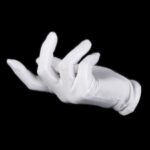
Has the Invisible Hand Given You a Nudge Recently?
July 22, 2014
How the New Panama Canal Affects Us
July 24, 2014During the Nantucket film festival I saw Font Men. A mini-documentary, it was all about a business firm that specialized in letters.
https://www.youtube.com/watch?v=C8uZyAIewak
Font specialist might be the quintessential example of an invisible job. When we see Delta on the wing of a plane, few of us ponder who decided the width of the “A.” And yet, through the film, the significance of selecting fonts became increasingly clear as did the role of the market in validating a design.
I guess we all ignore some human capital. Take a New Yorker Magazine fact checker. Few people pay attention until a fact is incorrect. Or a structural engineer who is only noticed when a skyscraper falls down. Or even an anesthesiologist, until a catastrophe occurs.
One of my favorite invisible jobs is the wayfinder. Described in David Zweig’s Invisibles, wayfinders enable us to…yes… find our way. Hired by airport designers, they are the individuals who use architecture, signage, lighting and color to lead us from Terminal A to Terminal D or to the baggage carousel or maybe an arcade of stores. All types of buildings employ them to create paths for us.
Debating what the universal restroom image should look like, airport wayfinders in Abu Dhabi considered but then vetoed dressing the male in a traditional Middle Eastern Robe (a dishdasha).

In his book, Zweig said that people who like invisible jobs are a diverse group that includes rock band guitar techs, UN interpreters and product namers (few of us know that Michael Cronan named the Kindle.). All of them, though, tend to be meticulous individuals who enjoy shouldering responsibility and care little about recognition,
Our bottom line: Because I always seem to be talking about entrepreneurs, I wanted to look at a different human capital group that the market values.
![econlifelogotrademarkedwebsitelogo[1]](/wp-content/uploads/2024/05/econlifelogotrademarkedwebsitelogo1.png#100878)



